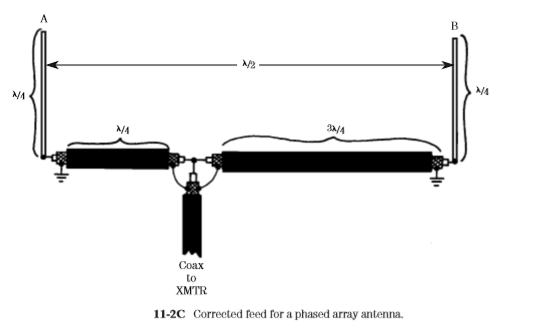For this reason, a bidirectional dipole has a gain of approximately 2 dB over an isotropic radiator. Add one or more additional elements, and the focusing becomes nearly unidirectional, which increases the effective radiated power (ERP) even more.
Second, the beam increases the received signal available at the inputs of the receiver. Antennas are generally reciprocal, so they will work for receiving as they do for transmitting. Finally, the directivity of the beam antenna allows the operator to null interfering stations. In fact, it is the last attribute of the beam that is most useful on today’s crowded bands.
All in all, if your funds are too little to provide both increased RF power and a good antenna system, then spend what is available on the antenna—not on the power. In this chapter we will focus on directional antennas that can be built relatively easily.
It is assumed that most readers who want a triband multielement Yagi will prefer to buy a commercial product, rather than build a homebrew model. The material herein concentrates on homebrew projects that are within the reach and capabilities of most readers. The first of these is not a beam antenna at all, but rather a rotatable dipole.
Rotatable dipole
The dipole is a bidirectional antenna with a figure-8 pattern (when viewed from above). The dipole is a half-wavelength and is usually installed horizontally, although vertical half-wavelength dipoles are known. Although the length of the dipole is too great for rotatability at the lower bands, it is within reason for the higher band. For example, the size of the halfwave dipole is approximately 16 ft on 10 m and 22 ft on 15 m. Even the 33-ft length on 20 m is not unreasonable for amateur constructors. The length of the dipole is found from
This length is approximate because of end effects and other phenomena, so some “cut and try” is required. Example 12-1 Find the length of a dipole antenna for a frequency of 24.930 MHz in the 12-m amateur radio band. Solution:
The half-wave dipole is fed in the center by coaxial cable. Each element of the dipole is one-half of the overall length (or, in the example given, about 9.4 ft). Figure 12-1 shows a rotatable dipole that can be designed for use on 15, 12, and 10 m. The radiator elements are made from 10-ft lengths of 3⁄4-in aluminum tubing. The tubing is mounted on “beehive” standoff insulators, which in turn are mounted on a 4-ft length of 2 2 lumber.
The lumber should be varnished against weathering. In a real pinch, the elements can be mounted directly to the lumber without the insulators, but this is not the recommended practice. The mast is attached to the 2 2 lumber through any of several means.
The preferred method is the use of a 1-in pipe flange. These devices are available at hardware stores under the names floor flange and right-angle flange. The 10-ft lengths of pipe are the standard lengths available in hardware stores, so it was selected as being closest to the required 22 ft for 15 m. A 0.14-µH loading coil is used at the center, between the elements, in order to make up for the short length. The dimensions of the coil are 4 to 5 turns, 0.5-in diameter, 4-in length. For low power levels, the coil can be made of no. 10 (or no. 12) solid wire—and, for higher levels, 1⁄8-in copper tubing. There are two basic ways to feed the antenna, and these are shown in details A and B in Fig. 12-1. The traditional method is to connect the coaxial cable (in parallel) across the inductor. This method is shown in Fig. 12-1, detail A.
A second method is to link couple the coil to the line through a one- to three-turn loop (as needed for impedance matching). This is the method that would be used for a toroidal inductor. Lower frequencies can be accommodated by changing the dimensions of the coil. The coil cannot be scaled, simply because the relative length of the antenna changes as the frequency changes. But it is possible to cut and try by adding turns to the coil, one turn at a time, and remeasuring the resonant frequency.
Adding inductance to the coil will make the antenna usable on 17 m and 20 m, as well as on 15 m. Another method for building a rotatable dipole for lower frequencies is to increase the element lengths. On 17 m, the overall length is approximately 27.4 ft, so each element length is 13.7 ft long. This length can be achieved by either of two methods. First, adjacent sizes of aluminum tubing are designed so that the smaller will be a slip-fit inside of the larger. What constitutes “adjacent sizes” depends on the wall thickness, but for one common brand, the 7⁄8-in is adjacent to the 3⁄4-in size.
You can use two smaller lengths to make the larger lengths of pipe, and cut it to size. This method is only available to those readers who have a commercial or industrial metals distributor nearby, because the 16-ft lengths are not generally available from hardware stores. Bands higher than 15 m (i.e., 12 and 10 m) can be accommodated by using the 10-ft lengths of tubing, but without the inductor. The tubing is cut to the desired half-wavelength size and used directly.
















